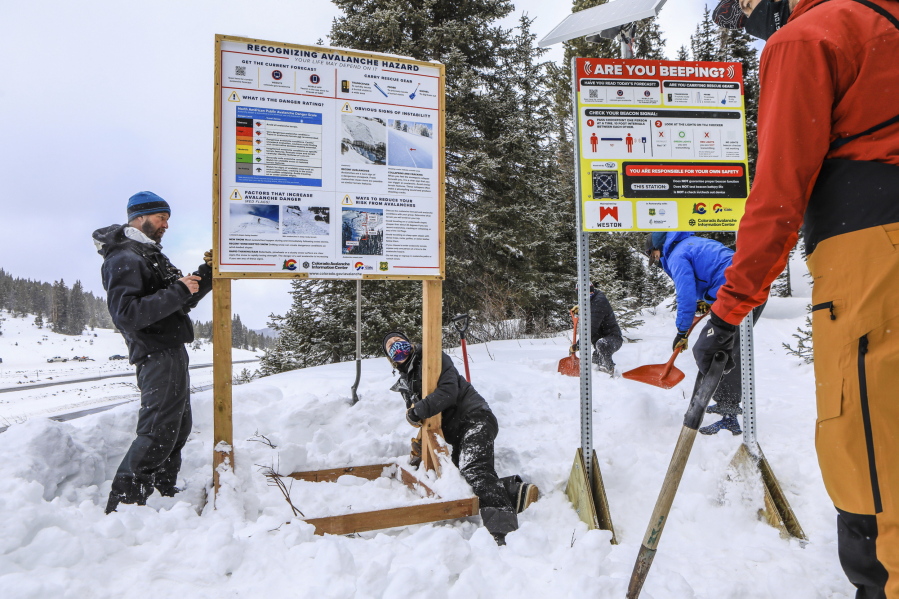DENVER — The deaths of two Colorado men caught in avalanches and a third in Montana over the frigid Presidents Day weekend show how backcountry skiers and others in the Rocky Mountain wilderness risk triggering weak layers of snow that have created the most hazardous conditions in a decade, forecasters say.
At least 25 people have been killed in avalanches in the United States so far this year — more than the 23 who died last winter. Typically, 27 people die in avalanches in the U.S. annually.
Avalanche forecasters say they have rarely seen the danger as high as it is now — and it will grow as more snow moves into the Rockies, adding weight and stress on a weak, granular base layer of snow that’s susceptible to breaking apart and triggering especially wide slides on steep slopes.
The main culprit is that ground layer of snow that dropped in October. A dry November weakened it, which is anywhere from several inches to several feet thick, and despite more snow falling, it’s stayed the consistency of granular sugar, said Dave Zinn, an avalanche forecaster for the Gallatin National Forest Avalanche Center in southwestern Montana.
“That layer consists of large, sugary crystals that don’t bond together well. It’s impossible to make a snowball from it. And when it becomes weighted down, it becomes fragile and breaks,” bringing down the heavier layers on top of it, Zinn said.
“It’s the weakest link in the chain. When you pile on more snow, there’s always one spot that’s going to break,” said Ethan Greene, director of the Colorado Avalanche Information Center.
Backcountry skier Craig Kitto, 45, of Bozeman, Mont., was fatally injured Sunday when the slope he and a friend were climbing cracked without warning, collapsed and swept him downhill into a tree. The other person wasn’t hurt.
Similar conditions may have led to the death of David Heide, 57, a backcountry skier whose body was found in an avalanche debris field Sunday in central Colorado’s Clear Creek County. In neighboring Grand County, an avalanche carried a snowmobiler onto a frozen lake Sunday, and his body was found buried in snow. A coroner is investigating.
On Feb. 6, Utah saw its deadliest avalanche in about 30 years when four backcountry skiers in their 20s died and another four dug themselves out of a 1,000-foot slide east of Salt Lake City.
Several factors are at play in the rash of deaths: The snowpack, which can be affected by windstorms shifting and piling snow atop weak layers; weather conditions that can change rapidly in the high altitudes of the Rockies; and the availability of public lands in the U.S. West, where people often take advantage of easily accessible national forests.
In contrast, ski areas have long ensured their slopes are groomed, potential avalanches in their areas are triggered, and nearby backcountry areas are closed before the first customers hit the lift lines. It’s not uncommon for skiers at Colorado’s Loveland Ski Area to hear an occasional howitzer targeting danger-prone areas.
“The ski patrols do lots of work to mitigate hazards,” Zinn said. “But in the backcountry, we have to be our own avalanche experts.”
Avalanche centers in Colorado, Montana and Utah, as well as the U.S. Forest Service National Avalanche Center, issue daily advisories on conditions and risk levels, as well as safety and training resources.



